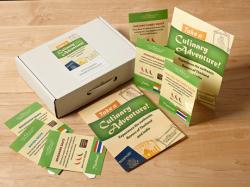Phillips Foods Elevates Non-Commercial Offering With Flavorful Culinary Kits
June 7, 2011 | 1 min to read

Baltimore, MD – Phillips Foods introduces exciting new flavors to enhance the versatile culinary options non-commercial operators can offer their guests. Today captive diners are seeking both variety and authentic flavors to expand their meal options beyond core offerings. Phillips Foods’ presents two easy to use customizable culinary themed promotional kits. Each kit provides opportunity for operators to add excitement either as limited time offers, new daily items on their cafeteria line or build appealing custom themes to stir interest.
The Steve Phillips World Cuisine line offers a delicious promotional kit experience: “World Cuisine Culinary Adventures” bringing to life the authentic flavors of Thailand and India while providing operators ultimate flexibility.
The featured Thai flavors include:
– Thai Red Curry Sauce
– Thai Green Curry Sauce
– Massaman Sauce
– Thai Yellow Curry Sauce
The featured Indian flavors include:
– Roganjosh Sauce
– Bhuna Sauce
– Makani Sauce
– Tikki Masala Sauce
Another enticing promotional kit includes “Phillips Classic Coastal Cuisine” offering a full array of quality seafood products. The kit features product categories such as Crab Cakes, Appetizers, Crab Mix Blends, Seafood Sliders and Par Cooked Cakes highlighting the company’s Ocean City, Maryland heritage.
Source: Phillips Foods
